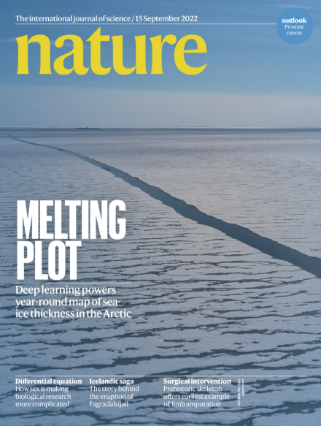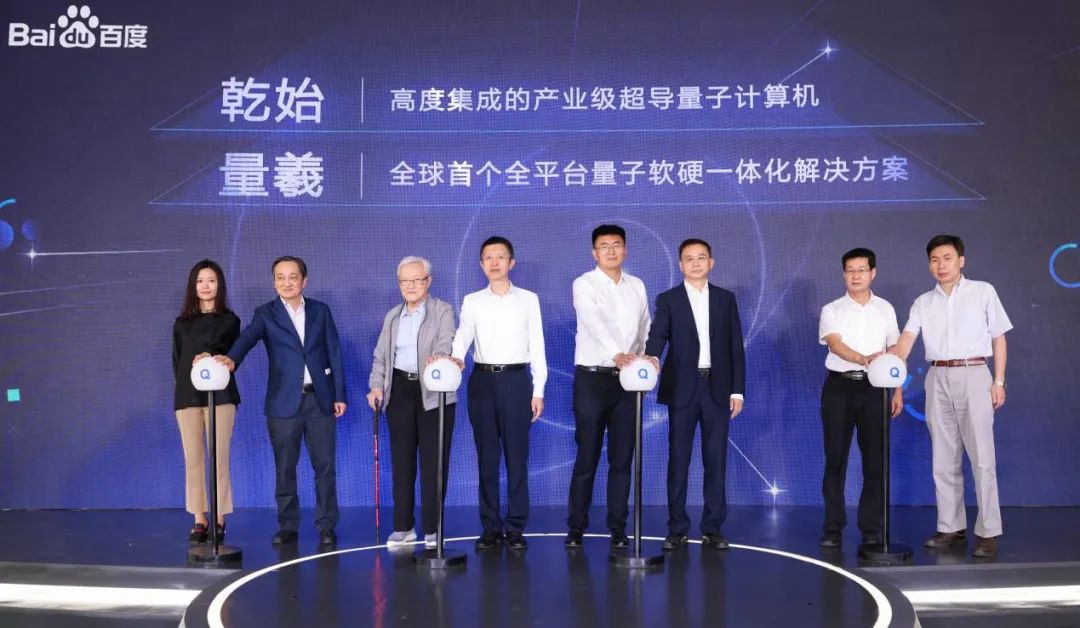"Nature" (published 20220915) One -week thesis guide
Author:Scientific network Time:2022.09.17
Compilation | Feng Weiwei
Nature, 15 september 2022, VOL 609, Issue 7927
"Nature" September 15, 2022, Vol. 609, 7927

Physics Physics
FEMTOSECOND LASER WRITING of Lithium Niobate Ferroelectric NanoDomains
Flying laser is written into lithium tadplate and iron electric nanomal
Author: xiaoyi xu, tianxin Wang, Pengcheng Chen, Chao zhou, jianan ma, dunzhao wei, huijun Wang, ben niu, xinyuan fang, di wu, shining zhu, min gu, min xiao yong zhang,
Link:
https://www.nature.com/articleS/S41586-022-05042-z z
Summary:
Lithium lithium (Linbo3) is a very promising optical communication and quantum photon chip material. The author shows a non -easy near -infrared laser writing technology, which is used in Linbo3 to reconstruct the three -dimensional iron electricity project with nano -level resolution.
The proposed method is based on the laser -induced electric field. According to the direction of the laser, you can write or erase the structure in the crystal. This method provides a way for controllable nano -domaining projects such as Linbo3, such as the controllable nano -electrodes of transparent iron electrical crystals. It has potential application value in high -efficiency mixing, high -frequency resonant, and large -capacity non -loose iron electrical memory.
Abstract:
Lithium niobate (LiNbO3) is viewed as a promising material for optical communications and quantum photonic chips. Here we demonstrate a non-reciprocal near-infrared laser-writing technique for reconfigurable three-dimensional ferroelectric domain engineering in LiNbO3 with nanoscale resolution. The proposed method is based on a laser-induced electric field that can either write or erase domain structures in the crystal, depending on the laser-writing direction. This approach offers a pathway for controllable nanoscale domain engineering in LiNbO3 and other transparent ferroelectric crystals, which has potential Applications in High-Efficience Frequency Mixing, High-Frequency Acoustic Resonators and High-CaPacity non-volaelectric memory.
Attosecond Spectroscopy of Size-Resolved Water Clusters
A second spectrum of the water group cluster
Author: xiaochun gong, saijoscha heck, Denis Jelovina, Conail Perry, Kristina zinchenko, Robert Lucchese hakob wrner
Link:
https://www.nature.com/articleS/S41586-022-05039-8
Summary:
Electrical dynamics in water has the basic importance to many phenomena, but in fact, research is facing many challenges in concepts and methods. The author introduced A second -sized resolution spectrum, and established the understanding of the molecular level of A second electronic dynamics in the water. They measured the impact of the addition of a single water molecule on the delay of the water cluster, and found that the clusters containing 4 to 5 molecules continued to increase, and for the larger cluster, the delay was not great. Researchers have proved that these delays are proportional to the spatial space of the generated electronic acupoints. The electronic cave first increases with the size of the cluster, and then partial positioning Essence
These results indicate that the sensitivity of light delay in the ionization of electronic cavities is unknown, and it also shows that the direct connection between the electronic structure and the Asecu linden dynamics. This result provides a new perspective for studying the ionization domain and its A second dynamics.
Abstract:
Electron dynamics in water are of fundamental importance for a broad range of phenomena, but their real-time study faces numerous conceptual and methodological challenges. Here we introduce attosecond size-resolved cluster spectroscopy and build up a molecular-level understanding of the attosecond electron dynamics in water. We measure the effect that the addition of single water molecules has on the photoionization time delays of water clusters. We find a continuous increase of the delay for clusters containing up to four to five molecules and little change towards larger clusters. We show that these delays are proportional to the spatial extension of the created electron hole, which first increases with cluster size and then partially localizes through the onset of structural disorder that is characteristic of large clusters and bulk liquid water. These results indicate a previously unknown sensitivity of Photoionization Delays to Electron-Hole Delocalization and Indicate A Direct Li NK BetWeen Electronic Structure and Attosecond Photoionization Dynamics. Our Results Offer New Perspectives for Studying Electron-Hole Delocalization and Its Attosecon Denam Denam
Extended bose -Hubbard Model with Dipolar Excitons
Expansion Boson with Polaries-Habard Model
Author: C. Lagoin, U. Bhattacharya, T. GRASS, R. W. chhajlany, T. Salamon, K. Baldwin, L. Pfeiffer, M. LewenStein, M. Holzmann F. Dubin
Link:
https://www.nature.com/articleS/S41586-022-05123-z
Abstract: The Hibardian model is one of the most famous theoretical frameworks for condensing state physics. It describes the strong related phase of interaction quantum particles limited in the lattice. Regarding Bosse, Hobel Hibard Hami has been thoroughly studied at close -range live interactions.
However, in the experiment, the coupling at a farther distance is still elusive. This marks the forefront of the extended Boloshbid Hibardia, which makes it possible to separate in the score point. The author realizes the quantity of this Hami by restricting the semiconductor puppet pole inspiration.
The strongest duplication force is stabilized in the insulation state between the nearest lattice position. This feature of the extended Bolore-Hobid model shows the theoretical characteristics of the sequence of chessboard space. Therefore, this study emphasizes that the Polarist is possible in the compatriots with a programmable geometric structure and more than 100 digits, making it possible to achieve the control of the boson array with strong stations.
Abstract:
The Hubbard model constitutes one of the most celebrated theoretical frameworks of condensed-matter physics. It describes strongly correlated phases of interacting quantum particles confined in lattice potentials. For bosons, the Hubbard Hamiltonian has been deeply scrutinized for short-range on-site interactions. However, accessing longer-range couplings has remained elusive experimentally. This marks the frontier towards the extended Bose–Hubbard Hamiltonian, which enables insulating ordered phases at fractional lattice fillings. Here we implement this Hamiltonian by confining semiconductor dipolar excitons in an artificial two-dimensional square lattice. Strong dipolar repulsions between nearest-neighbour lattice sites then stabilize an insulating state at half filling. This characteristic feature of the extended Bose–Hubbard model exhibits the signatures theoretically expected for a chequerboard spatial order. Our work thus highlights that dipolar excitons enable Controlled Impleme Ntations of Boson-Like Arrays with Strong Off-Site Interactions, in Lattices with ProgrammMABLE GEOMETRIES and More than 100 Sites.
Chemical Chemistry
The first-principles pHase diagram of monolayer nanoconfined water
Single -layer nano -pressure water first principle phase picture
Author: Venkat Kapil, Christoph Schran, Andrea Zen, Ji Chen, Christ J. Pickard Angelos Michaelides
Link:
https://www.nature.com/articleS/S41586-022-05036-x
Summary:
The water in the nano -grade cavity is everywhere, which is essential to the daily phenomenon of geology and biology. However, the nature of nano -level water can be essentially different from the nature of volume water. The author combines a series of calculation methods to realize the first principle -level research on single -layer water in graphene channels. They found that single -molecular water showed amazing richness and diversification, and was highly sensitive to Van Dehua's pressure in temperature and effect in nano channels.
In addition to multiple molecules that changes more than 400 Cairvin with the pressure non -monotonous pressure, they also predict a six -phase, which is between the middle object between the solid and the liquid, and a super ionic phase with high -conductivity. Its conductivity exceeds the battery material. It is worth noting that this indicates that nano -constraints may be a hopeful way to achieve ultrasound behavior under the conditions that are easy to approach.
Abstract:
Water in nanoscale cavities is ubiquitous and of central importance to everyday phenomena in geology and biology. However, the properties of nanoscale water can be substantially different from those of bulk water. Here we combine a range of computational approaches to enable a first-principles- level investigation of a single layer of water within a graphene-like channel. We find that monolayer water exhibits surprisingly rich and diverse phase behaviour that is highly sensitive to temperature and the van der Waals pressure acting within the nanochannel. In addition to multiple molecular phases with melting temperatures varying non-monotonically by more than 400 kelvins with pressure, we predict a hexatic phase, which is an intermediate between a solid and a liquid, and a superionic phase with a high electrical conductivity exceeding that of battery materials. Notably, this Suggests that nanoconfinement cored be a promising route towards such iTions.
Climate climate
A Year-Round Satellite Sea-Ice Thickness Record from Cryosat-2
Cryosat-2's annual satellite sea ice thickness record
作者:Jack C. Landy, Geoffrey J. Dawson, Michel Tsamados, Mitchell Bushuk, Julienne C. Stroeve, Stephen E. L. Howell, Thomas Krumpen, David G. Babb, Alexander S. Komarov, Harry D. B. S. Heorton, H. Jakob Belter Yevgeny Aksenov
Link:
https://www.nature.com/articleS/S41586-022-05058-5
Summary:
With the warming of the climate, the Arctic Sea Ice is even reduced by unprecedented speeds for thousands of years. With the increase in the melting of Iceland, it has increased the commercial interests of the Arctic region, and it has become more variable and easy to move, which increases the safety risks of sea users. However, the key melting period from May to September, no satellite observation of sea ice thickness is currently impossible. During this period, due to the facing major challenges of processing high data, satellite observations are most valuable for seasonal prediction and other applications.
The authors use the numerical simulation of the radar alpine response of the polar measuring high satellite Cryosat-2 built by the in-depth learning and the European Space Agency to overcome these challenges, and generate a pan-Arctic sea ice thickness data set for the Arctic melting period.
The CryOSAT-2 observation captures the space and time pattern of the ice melting rate recorded by the independent sensor, and matches the time sequence of the time sequence of the air ice volume simulated by the Pan-Polar Ice Ocean Simulation and the assimilation system.
At the beginning of the melting season of 2011-2020, the thickness of the Arctic sea ice was 1.87 ± 0.10 meters; at the end of the melting season in August, the thickness of the sea ice was 0.82 ± 0.11 meters. This year's sea ice thickness record provides opportunities for understanding the feedback of the Arctic climate at different time standards.
Abstract:
Arctic sea ice is diminishing with climate warmingat a rate unmatched for at least 1,000 years. As the receding ice pack raises commercial interest in the Arctic, it has become more variable and mobile, which increases safety risks to maritime users5. Satellite observations of sea- ice thickness are currently unavailable during the crucial melt period from May to September, when they would be most valuable for applications such as seasonal forecasting, owing to major challenges in the processing of altimetry data. Here we use deep learning and numerical simulations of the CryoSat -2 radar altimeter response to overcome these challenges and generate a pan-Arctic sea-ice thickness dataset for the Arctic melt period. CryoSat-2 observations capture the spatial and the temporal patterns of ice melting rates recorded by independent sensors and match the time series Of Sea-Ice Volume Modelled by the Pan-erctic iceln modeling and assimilarative system reanalysis. Between 2011 and 2020, Arctic sea-ice thickness was 1.87±0.10m at the start of the melting season in May and 0.82±0.11m by the end of the melting season in August. Our year-round sea-ice thickness record unlocks opportunities for understanding Arctic climate feedbacks on Different Timescales.
Geological Geology
Rapid shifting of a deep magmatic source at fagradalsfjall volcano
Author: sumundur a. Halldórsson, Edward W. Marshall, Alberto Caraciolo et al.
Link:
https://www.nature.com/articleS/S41586-022-04981-X
Summary:
The Icelandic Rift Valley has revealed the role of concentrated crustal magma reservoirs and side magma movement, as well as the important characteristics of the ocean -germia magma activity. The result of this shallow crustal processing of magma is that in the most upper mantle and the lower crust, the characteristics of retrospective melt origin, evolution and migration are printed. The author put forward a unique insight into the process of the region through the comprehensive rock science and global chemical research of the Gladal volcanic volcanic in Iceland in 2021.
For the global chemical analysis of Xuanwu Rock erupted 50 days before the eruption, combined with related gas emissions, it revealed its direct source of the magma storage zone of the magma in Mohuo District. Earth chemical indicators represent different mantle components and melting conditions, and its speed of changes is unmatched by a single basalt eruption in the world.
Initially, the erupting lava was mainly composed of melts from the shallow mantle, but in the subsequent three weeks, the magma increasingly composed of deeper magma. The rapidly rapid eruption ingredients provide an unprecedented time record of magma mixed, filtering the mantle signal, which is consistent with the processing of the near-Moho melting lens containing 107-108 cubic meters of basalt. Through the recent real -time survey of this critical magma treatment area, you can have a new understanding of the time scale and operating mode of the Xuanwu rock magma system.
Abstract:
Recent Icelandic rifting events have illuminated the roles of centralized crustal magma reservoirs and lateral magma transport, important characteristics of mid-ocean ridge magmatism. A consequence of such shallow crustal processing of magmas is the overprinting of signatures that trace the origin, evolution and transport of melts in the uppermost mantle and lowermost crust. Here we present unique insights into processes occurring in this zone from integrated petrologic and geochemical studies of the 2021 Fagradalsfjall eruption on the Reykjanes Peninsula in Iceland. Geochemical analyses of basalts erupted during the first 50 days of the eruption, combined with associated gas emissions, reveal direct sourcing from a near-Moho magma storage zone. Geochemical proxies, which signify different mantle compositions and melting conditions, changed at a rate unparalleled for individual basaltic eruptions globally. Initially, the erupted lava was dominated by Melts Source from the Shallowest M antle but over the following three weeks became increasingly dominated by magmas generated at a greater depth. This exceptionally rapid trend in erupted compositions provides an unprecedented temporal record of magma mixing that filters the mantle signal, consistent with processing in near-Moho melt lenses containing 107 -108 m3 of basaltic magma. Exposing previously inaccessible parts of this key magma processing zone to near-real-time investigations provides new insights into the timescales and operational mode of basaltic magma systems.编辑|方圆
Capture | Zhihai
= "Science Network" Data-Alias = "ScienceNet-Cas" Data-Signature = "In-circle major events, industry insights, occasionally gossip ... produced by the world's largest Chinese science community, produced by Chinese Science News Agency. Contact us: cooperation [email protected]; submitting [email protected]. "Data-Origin_num =" 1173 "Data-IS_BIZ_BAN =" 0 "Data-Isban =" 0 "class =" js_wx_highlight "data-from =" 2 ">: [email protected]
Submission: [email protected]
Like this article?Praise + watch support!






- END -
Baidu releases quantum computers: not bare metal, "use it as soon as possible"

Text | China Newspaper reporter Zhao GuangliLink the quantum computer with industr...
How many articles do the website update one day?

The number of articles on the website one day has a lot to do with the website typ...